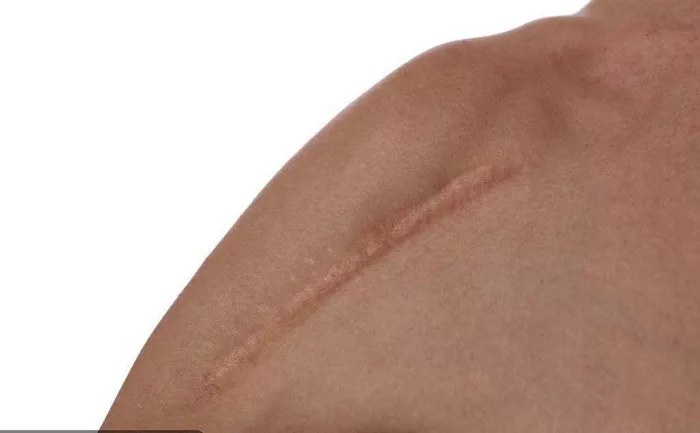A leg ulcer is more than just a wound on the leg. It is a chronic, open sore that fails to heal within a typical timeframe and often signals deeper underlying issues such as poor circulation, diabetes, or prolonged pressure on the skin. Unlike cuts or bruises that resolve naturally in days or weeks, leg ulcers can persist for months or even years if not managed correctly. They commonly occur between the knee and ankle, particularly around the lower calf or inner ankle. The skin around the ulcer may become discolored, swollen, or hardened, and in severe cases, the wound may emit an unpleasant odor or ooze fluid.
The main reason leg ulcers are difficult to treat is that they often stem from internal problems. Venous insufficiency, for example, occurs when the valves in the veins of the legs fail to function properly. This leads to blood pooling, increased pressure, and eventually, tissue breakdown. Arterial ulcers, by contrast, result from inadequate blood flow due to narrowed arteries. There are also neuropathic ulcers, which arise from nerve damage, often in people with diabetes. Because leg ulcers can stem from so many causes, healing them is not just a matter of applying ointment and waiting—it requires a targeted approach that addresses both the symptom and its root.
How Long Does Healing Typically Take?
There is no single answer to how long a leg ulcer takes to heal. It depends on several factors, including the cause of the ulcer, the individual’s overall health, and how promptly and effectively treatment begins. On average, venous leg ulcers can take anywhere from a few weeks to several months to heal. A small, shallow ulcer with good blood supply and consistent wound care might heal in under 6 weeks. However, more extensive ulcers can take over 12 weeks or longer, especially if complicated by infection or poor circulation.
Healing time is also influenced by the quality of care. Ulcers treated in a structured, multidisciplinary setting—such as wound clinics or specialist vascular centers—tend to heal faster. This is because these environments provide expert assessments, appropriate dressings, compression therapy, and sometimes surgical interventions. On the other hand, ulcers left untreated or improperly managed may worsen, deepen, and develop complications like cellulitis or even osteomyelitis, dramatically extending healing time.
What Factors Can Delay Healing?
One of the most significant contributors to delayed healing is poor blood circulation. Without enough oxygen and nutrients delivered to the tissue, the body cannot repair itself effectively. This is particularly problematic in people with diabetes, arterial disease, or those who smoke. Even mild vascular insufficiency can slow healing dramatically. Another common factor is infection. When bacteria colonize an ulcer, they can disrupt the healing process by triggering prolonged inflammation and tissue damage.
Patient-related factors also play a role. Older adults may heal more slowly due to reduced skin regeneration. Chronic conditions such as kidney disease, anemia, or malnutrition weaken the immune system and cellular repair. Non-adherence to treatment plans—such as refusing to wear compression stockings or failing to clean the wound daily—can undo weeks of progress. Emotional stress and depression have even been linked to slower wound healing through hormonal and immune system effects. Healing is not just about physical treatment; it’s also about the person’s entire environment and mindset.
How Is a Leg Ulcer Diagnosed and Assessed?
When someone presents with a leg ulcer, a thorough medical assessment is critical to determine the cause and guide treatment. A visual examination will assess the wound’s size, depth, location, and signs of infection. However, additional tests are usually necessary. A Doppler ultrasound, for instance, measures blood flow in the leg and helps distinguish between venous and arterial ulcers. Blood tests may reveal diabetes or inflammatory markers. In some cases, wound swabs are taken to identify bacterial infections, especially if healing stalls despite regular care.
Proper diagnosis is key because treatments differ drastically depending on the type of ulcer. Treating a venous ulcer with compression can speed healing dramatically, but applying the same compression to an arterial ulcer can worsen the problem by restricting already limited blood flow. Thus, treating leg ulcers is not a one-size-fits-all process. It starts with identifying the correct cause and then applying tailored therapy to match.
What Are the Key Components of Treatment?
Successful healing of leg ulcers involves several coordinated steps. First is wound care—regular cleaning and dressing changes that maintain a moist environment while preventing infection. Hydrocolloid or foam dressings are often used, depending on the amount of drainage. Antiseptic solutions or topical antibiotics may be applied in cases of mild infection. Secondly, compression therapy is the cornerstone of venous ulcer treatment. By applying pressure to the leg, compression stockings or bandages help improve blood flow, reduce swelling, and speed tissue repair.
Other treatments may include oral antibiotics for systemic infection, debridement to remove dead tissue, and sometimes surgery to correct faulty veins. For people with diabetes, blood sugar control is essential. For those with arterial disease, improving circulation through medication or surgery may be necessary. Nutritional support, particularly protein and vitamin C intake, can aid skin repair. Patients are also advised to elevate their legs regularly and stay active to encourage blood flow. A good treatment plan does not just close the wound; it also prevents recurrence.
What Is the Role of Lifestyle in Healing?
Lifestyle changes can significantly influence how quickly a leg ulcer heals. Smoking cessation is perhaps the most important, as nicotine constricts blood vessels and impairs tissue repair. Regular physical activity, like walking, promotes circulation and supports muscle tone, which helps push blood through the veins. A balanced diet rich in protein, zinc, and vitamins A and C supports cell regeneration and collagen formation.
Stress management and adequate sleep are also crucial. Poor sleep weakens immune function and prolongs inflammation. Emotional stress triggers cortisol release, which in excess can suppress healing. Wearing properly fitted compression garments every day and elevating the legs several times a day are habits that, over time, help reduce swelling and pressure on the ulcer site. Small lifestyle adjustments, when maintained consistently, can lead to significantly faster healing and lower risk of recurrence.
When Should You Seek Specialist Care?
While some leg ulcers can be managed in a primary care setting, others require referral to a specialist. If a wound has not shown improvement after four weeks of treatment, it’s time to reassess the approach. Signs of infection, such as increased redness, warmth, pus, or fever, should prompt urgent evaluation. Ulcers that bleed, have irregular edges, or are extremely painful may require biopsy to rule out skin cancer, which can sometimes mimic a chronic ulcer.
Specialist care often involves a team approach. A vascular surgeon might be consulted for circulation issues, a wound care nurse for dressing management, and a dietitian to address nutritional needs. Some centers offer advanced therapies like negative pressure wound therapy or bioengineered skin grafts for stubborn wounds. Delaying referral can prolong healing time and increase the risk of serious complications, including limb amputation in extreme cases.
How Can You Prevent Leg Ulcers from Recurring?
Once a leg ulcer heals, preventing recurrence becomes the next priority. Studies show that up to 70% of people who recover from a venous ulcer may develop another one within five years. The best prevention is ongoing use of compression therapy. Wearing compression stockings daily helps keep the veins functioning properly and reduces the risk of swelling and tissue breakdown.
Routine skincare is also important. Keeping the skin moisturized prevents cracking and injury. Avoiding trauma to the legs, such as knocking into furniture or wearing tight shoes, reduces the chance of new wounds. For people with diabetes, regular foot inspections and tight glucose control are essential. Educating patients about proper leg care, signs of early ulcer formation, and the importance of follow-up appointments makes a lasting difference. Prevention is a long-term commitment, but it’s far easier than treating another ulcer.
Final Thoughts
While leg ulcers are complex and often slow to heal, recovery is absolutely possible with the right treatment, support, and habits. Healing time varies—some ulcers may close in six weeks, while others may take three months or longer. The most important factor is consistency. Skipping compression therapy or failing to manage underlying conditions can reset progress. Healing isn’t linear; there may be setbacks, but steady care leads to results.
In a world of quick fixes, treating a leg ulcer demands patience and persistence. It’s a journey that requires involvement not only from healthcare providers but from the patient too. Understanding the cause, following a comprehensive treatment plan, and making lifestyle changes all contribute to successful healing. With awareness and commitment, most leg ulcers can be healed—and kept from returning.
Related Topics

































